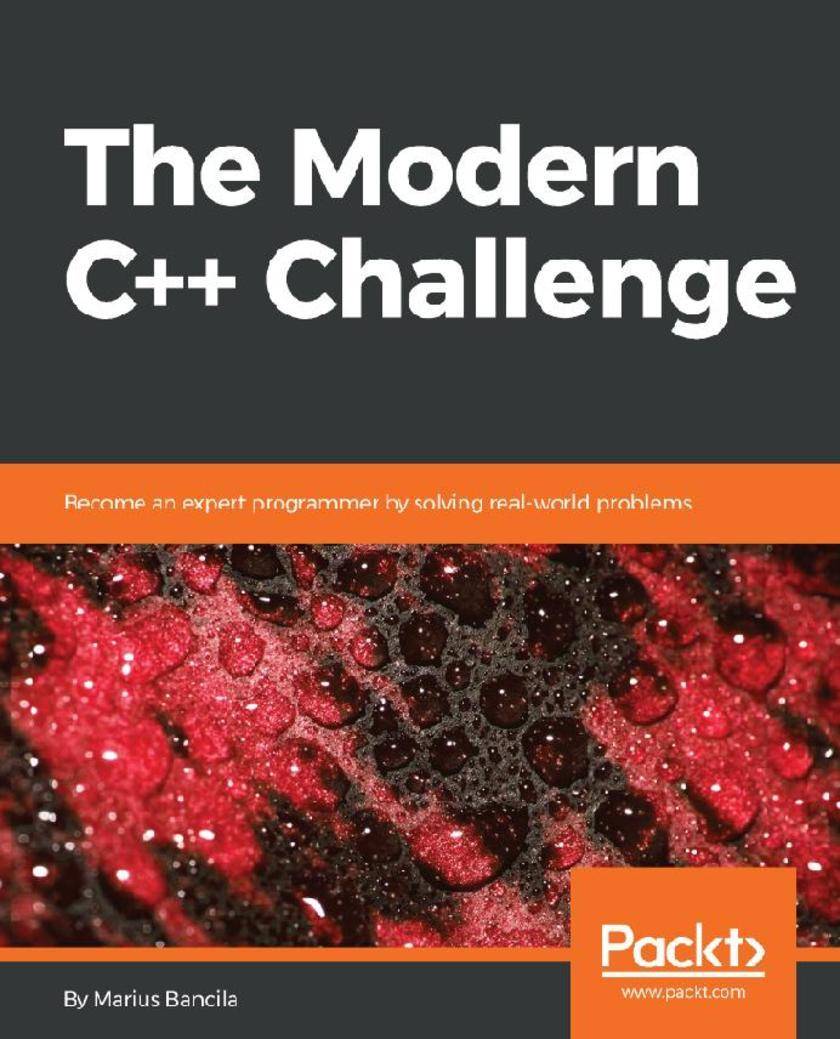
The Modern C++ Challenge
¥63.21
Test your C++ programming skills by solving real-world programming problems covered in the book About This Book ? Solve a variety of real-world programming and logic problems by leveraging the power of C++17 ? Test your skills in using language features, algorithms, data structures, design patterns, and more ? Explore areas such as cryptography, communication, and image handling in C++ Who This Book Is For This book will appeal to C++ developers of all levels. There's a challenge inside for everyone. What You Will Learn ? Serialize and deserialize JSON and XML data ? Perform encryption and signing to facilitate secure communication between parties ? Embed and use SQLite databases in your applications ? Use threads and asynchronous functions to implement generic purpose parallel algorithms ? Compress and decompress files to/from a ZIP archive ? Implement data structures such as circular buffer and priority queue ? Implement general purpose algorithms as well as algorithms that solve specific problems ? Create client-server applications that communicate over TCP/IP ? Consume HTTP REST services ? Use design patterns to solve real-world problems In Detail C++ is one of the most widely-used programming languages and has applications in a variety of fields, such as gaming, GUI programming, and operating systems, to name a few. Through the years, C++ has evolved into (and remains) one of the top choices for software developers worldwide. This book will show you some notable C++ features and how to implement them to meet your application needs. Each problem is unique and doesn't just test your knowledge of the language; it tests your ability to think out of the box and come up with the best solutions. With varying levels of difficulty, you'll be faced with a wide variety of challenges. And in case you're stumped, you don't have to worry: we've got the best solutions to the problems in the book. So are you up for the challenge? Style and approach A recipe-based approach where each problem is solved with the help of step by step instructions.
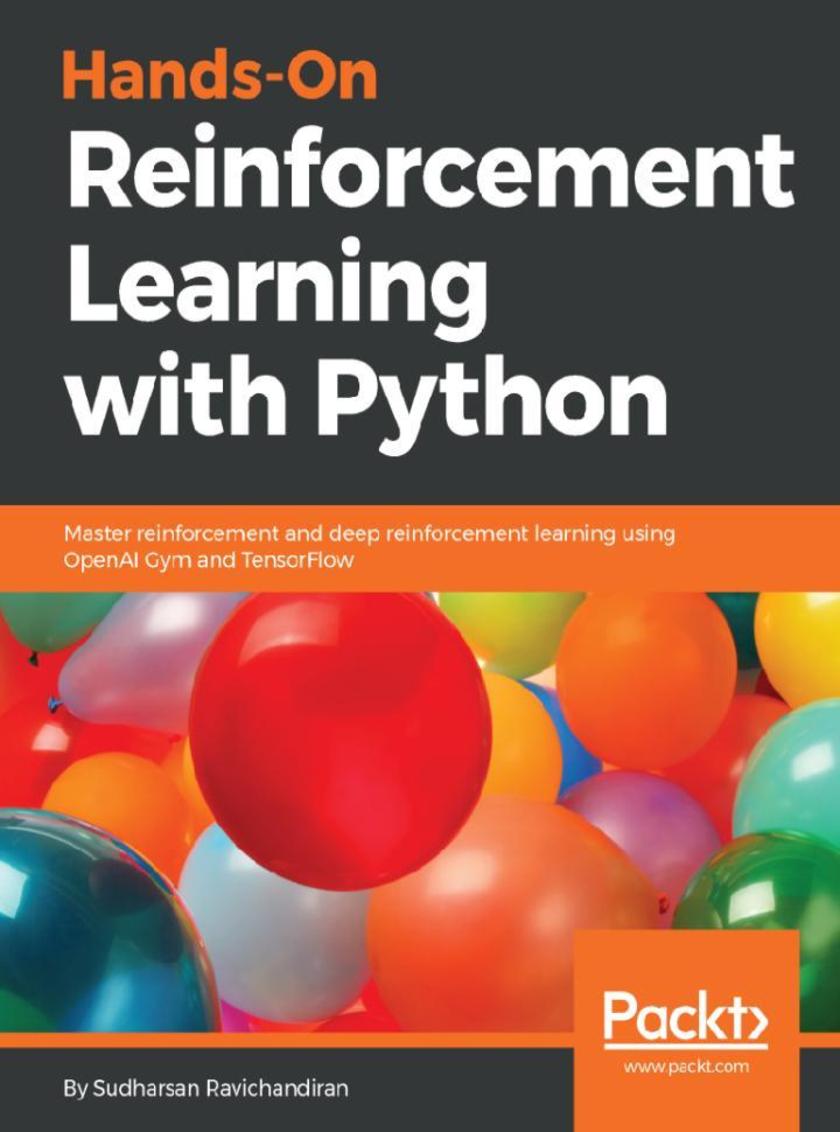
Hands-On Reinforcement Learning with Python
¥63.21
A hands-on guide enriched with examples to master deep reinforcement learning algorithms with Python About This Book ? Your entry point into the world of artificial intelligence using the power of Python ? An example-rich guide to master various RL and DRL algorithms ? Explore various state-of-the-art architectures along with math Who This Book Is For If you’re a machine learning developer or deep learning enthusiast interested in artificial intelligence and want to learn about reinforcement learning from scratch, this book is for you. Some knowledge of linear algebra, calculus, and the Python programming language will help you understand the concepts covered in this book. What You Will Learn ? Understand the basics of reinforcement learning methods, algorithms, and elements ? Train an agent to walk using OpenAI Gym and Tensorflow ? Understand the Markov Decision Process, Bellman’s optimality, and TD learning ? Solve multi-armed-bandit problems using various algorithms ? Master deep learning algorithms, such as RNN, LSTM, and CNN with applications ? Build intelligent agents using the DRQN algorithm to play the Doom game ? Teach agents to play the Lunar Lander game using DDPG ? Train an agent to win a car racing game using dueling DQN In Detail Reinforcement Learning (RL) is the trending and most promising branch of artificial intelligence. Hands-On Reinforcement learning with Python will help you master not only the basic reinforcement learning algorithms but also the advanced deep reinforcement learning algorithms. The book starts with an introduction to Reinforcement Learning followed by OpenAI Gym, and TensorFlow. You will then explore various RL algorithms and concepts, such as Markov Decision Process, Monte Carlo methods, and dynamic programming, including value and policy iteration. This example-rich guide will introduce you to deep reinforcement learning algorithms, such as Dueling DQN, DRQN, A3C, PPO, and TRPO. You will also learn about imagination-augmented agents, learning from human preference, DQfD, HER, and many more of the recent advancements in reinforcement learning. By the end of the book, you will have all the knowledge and experience needed to implement reinforcement learning and deep reinforcement learning in your projects, and you will be all set to enter the world of artificial intelligence. Style and approach This is a hands-on book designed to further expand your machine learning skills by understanding reinforcement to deep reinforcement learning algorithms with applications in Python.
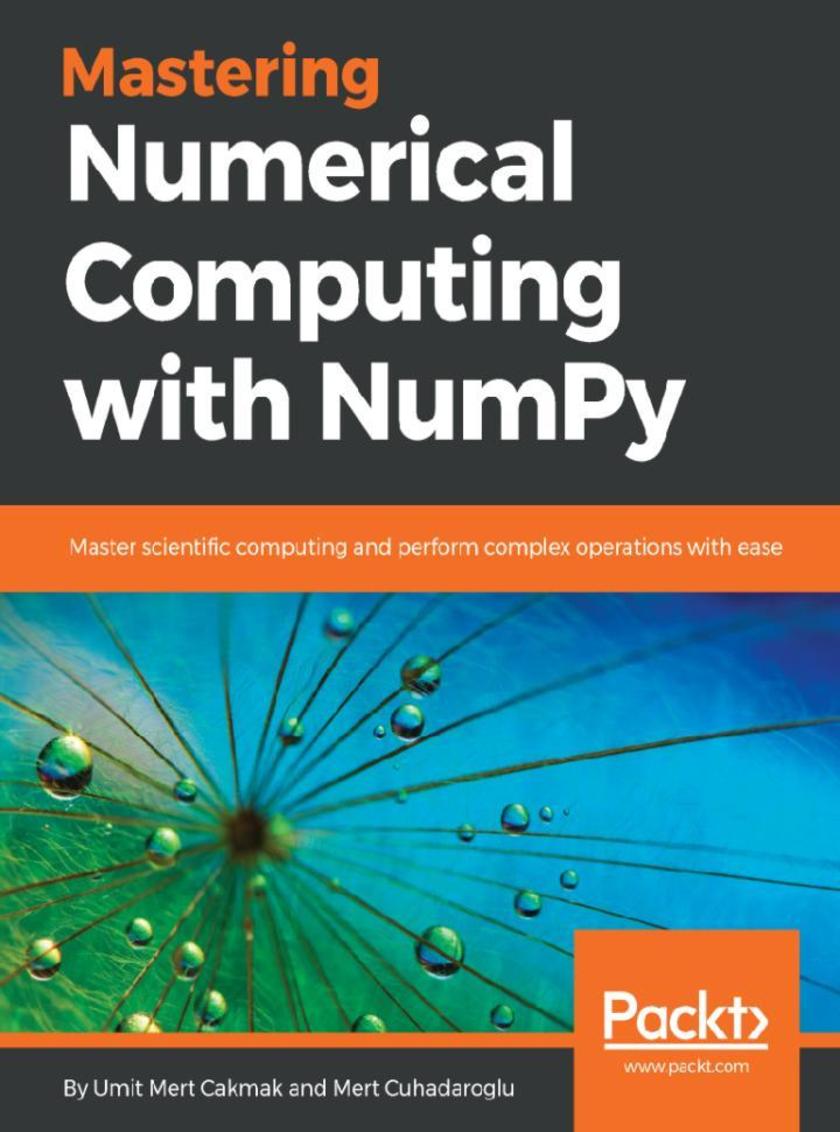
Mastering Numerical Computing with NumPy
¥63.21
Enhance the power of NumPy and start boosting your scientific computing capabilities About This Book ? Grasp all aspects of numerical computing and understand NumPy ? Explore examples to learn exploratory data analysis (EDA), regression, and clustering ? Access NumPy libraries and use performance benchmarking to select the right tool Who This Book Is For Mastering Numerical Computing with NumPy is for you if you are a Python programmer, data analyst, data engineer, or a data science enthusiast, who wants to master the intricacies of NumPy and build solutions for your numeric and scientific computational problems. You are expected to have familiarity with mathematics to get the most out of this book. What You Will Learn ? Perform vector and matrix operations using NumPy ? Perform exploratory data analysis (EDA) on US housing data ? Develop a predictive model using simple and multiple linear regression ? Understand unsupervised learning and clustering algorithms with practical use cases ? Write better NumPy code and implement the algorithms from scratch ? Perform benchmark tests to choose the best configuration for your system In Detail NumPy is one of the most important scientific computing libraries available for Python. Mastering Numerical Computing with NumPy teaches you how to achieve expert level competency to perform complex operations, with in-depth coverage of advanced concepts. Beginning with NumPy's arrays and functions, you will familiarize yourself with linear algebra concepts to perform vector and matrix math operations. You will thoroughly understand and practice data processing, exploratory data analysis (EDA), and predictive modeling. You will then move on to working on practical examples which will teach you how to use NumPy statistics in order to explore US housing data and develop a predictive model using simple and multiple linear regression techniques. Once you have got to grips with the basics, you will explore unsupervised learning and clustering algorithms, followed by understanding how to write better NumPy code while keeping advanced considerations in mind. The book also demonstrates the use of different high-performance numerical computing libraries and their relationship with NumPy. You will study how to benchmark the performance of different configurations and choose the best for your system. By the end of this book, you will have become an expert in handling and performing complex data manipulations. Style and approach This mastering guide will help you master your skills required to perform a complex numerical computation. The book contains the right mixture of theory and practical examples that will help you in dealing with the advanced NumPy and build solutions for your numeric and scientific computational problems
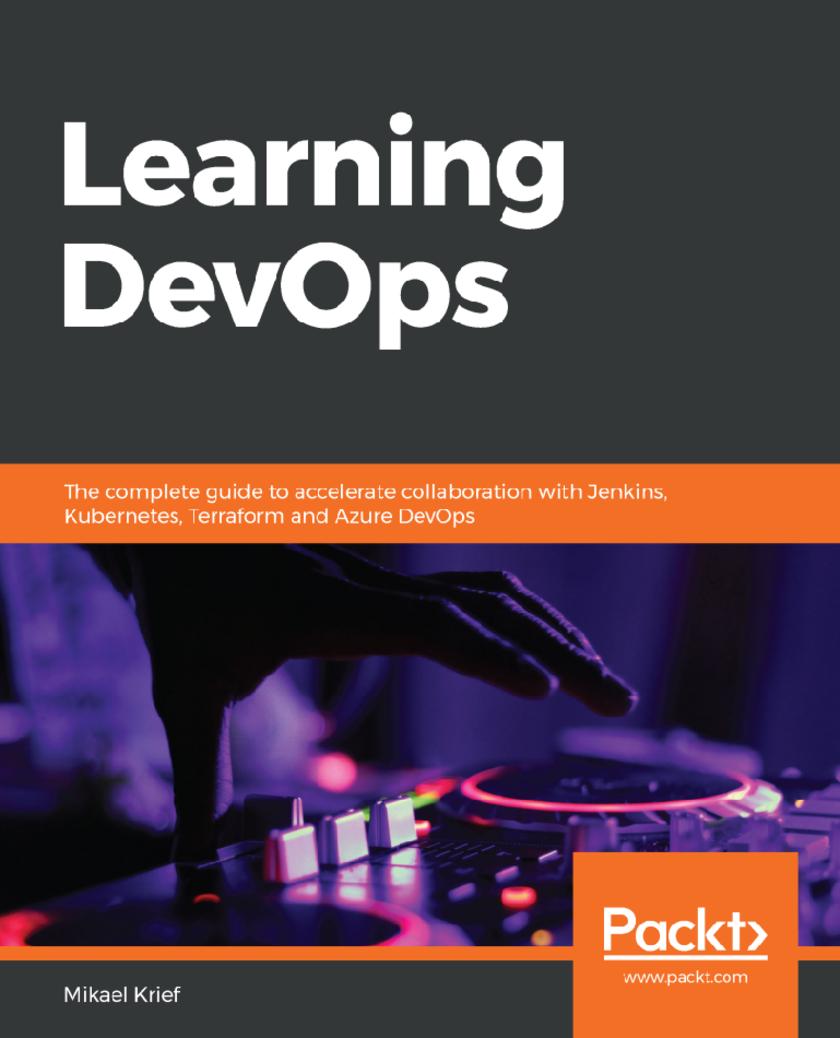
Learning DevOps
¥63.21
Simplify your DevOps roles with DevOps tools and techniques Key Features * Learn to utilize business resources effectively to increase productivity and collaboration * Leverage the ultimate open source DevOps tools to achieve continuous integration and continuous delivery (CI/CD) * Ensure faster time-to-market by reducing overall lead time and deployment downtime Book Description The implementation of DevOps processes requires the efficient use of various tools, and the choice of these tools is crucial for the sustainability of projects and collaboration between development (Dev) and operations (Ops). This book presents the different patterns and tools that you can use to provision and configure an infrastructure in the cloud. You'll begin by understanding DevOps culture, the application of DevOps in cloud infrastructure, provisioning with Terraform, configuration with Ansible, and image building with Packer. You'll then be taken through source code versioning with Git and the construction of a DevOps CI/CD pipeline using Jenkins, GitLab CI, and Azure Pipelines. This DevOps handbook will also guide you in containerizing and deploying your applications with Docker and Kubernetes. You'll learn how to reduce deployment downtime with blue-green deployment and the feature flags technique, and study DevOps practices for open source projects. Finally, you'll grasp some best practices for reducing the overall application lead time to ensure faster time to market. By the end of this book, you'll have built a solid foundation in DevOps, and developed the skills necessary to enhance a traditional software delivery process using modern software delivery tools and techniques What you will learn * Become well versed with DevOps culture and its practices * Use Terraform and Packer for cloud infrastructure provisioning * Implement Ansible for infrastructure configuration * Use basic Git commands and understand the Git flow process * Build a DevOps pipeline with Jenkins, Azure Pipelines, and GitLab CI * Containerize your applications with Docker and Kubernetes * Check application quality with SonarQube and Postman * Protect DevOps processes and applications using DevSecOps tools Who this book is for If you are a developer or a system administrator interested in understanding continuous integration, continuous delivery, and containerization with DevOps tools and techniques, this book is for you.
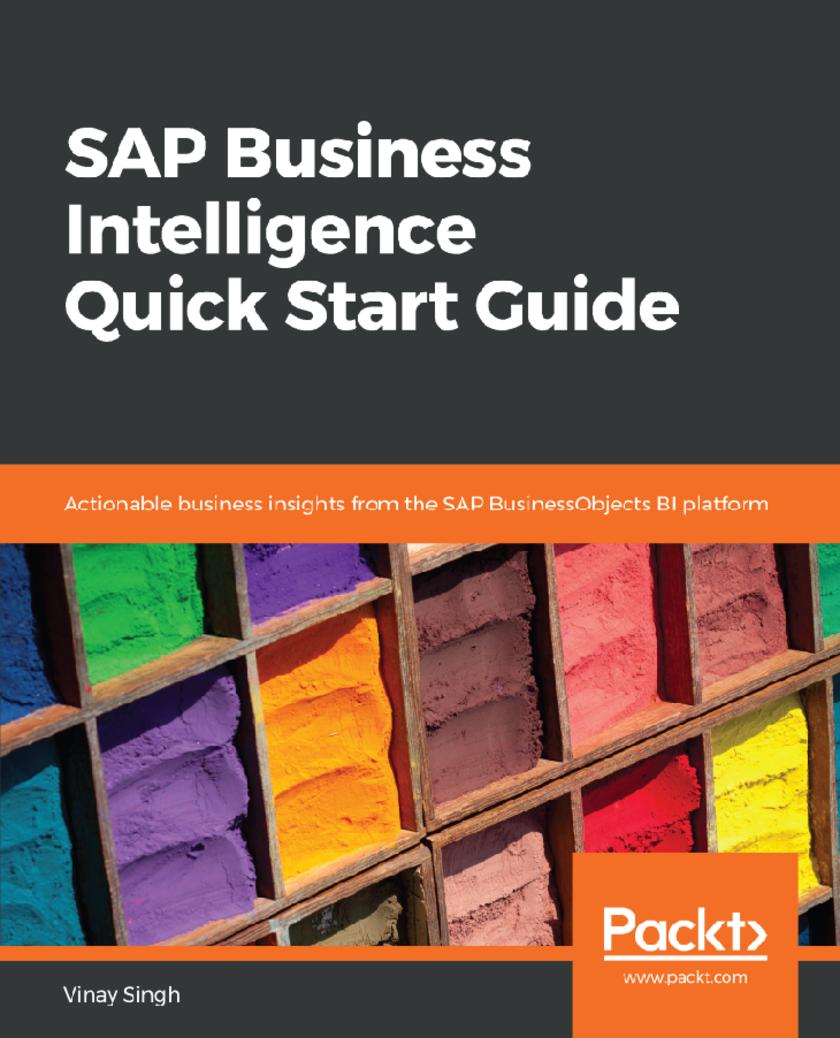
SAP Business Intelligence Quick Start Guide
¥63.21
Designing and deploying solutions using the SAP BusinessObjects Business Intelligence platform 4.2. Key Features * Get up and running with the SAP BusinessObjects Business Intelligence platform * Perform effective data analysis and visualization for actionable insights * Enhance your BI strategy by creating different types of reports and dashboards using SAP BusinessObjects Book Description The SAP BusinessObjects Business Intelligence platform is a powerful reporting and analysis tool. This book is the ideal introduction to the SAP BusinessObjects Business Intelligence platform, introducing you to its data visualization, visual analytics, reporting, and dashboarding capabilities. The book starts with an overview of the BI platform and various data sources for reporting. Then, we move on to looking at data visualization, analysis, reporting, and analytics using BusinessObjects Business Intelligence tools. You will learn about the features associated with reporting, scheduling, and distribution and learn how to deploy the platform. Toward the end, you will learn about the strategies and factors that should be considered during deployment. By the end, you will be confident working with the SAP BusinessObjects Business Intelligence platform to deliver better insights for more effective decision making. What you will learn * Work with various tools to create interactive data visualization and analysis * Query, report, and analyze with SAP Business Objects Web Intelligence * Create a report in SAP Crystal Reports for Enterprise * Visualize and manipulate data using an SAP Lumira Storyboard * Deep dive into the workings of the SAP predictive analytics tool * Deploy and configure SAP BO Intelligence platform 4.2 Who this book is for This book is for Business Intelligence professionals and existing SAP ecosystem users who want to perform effective Business Intelligence using SAP BusinessObjects.
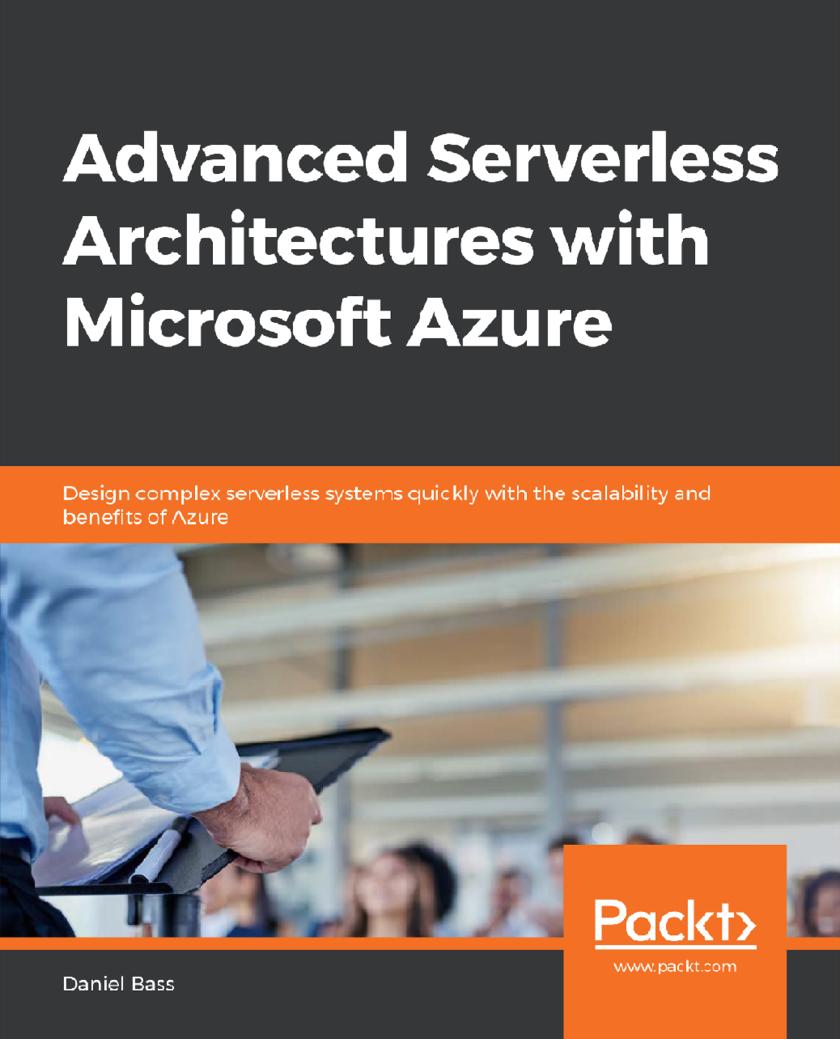
Advanced Serverless Architectures with Microsoft Azure
¥63.21
Build complex, observable, and fault-tolerant serverless systems easily on Microsoft Azure. Key Features * Use serverless systems to help you fulfill complex requirements * Develop your knowledge of Azure Microsoft Serverless * Understand concepts with a hands-on approach and helpful examples Book Description Advanced Serverless Architectures with Microsoft Azure redefines your experience of designing serverless systems. It shows you how to tackle challenges of varying levels, not just the straightforward ones. You'll be learning how to deliver features quickly by building systems, which retain the scalability and benefits of serverless. You'll begin your journey by learning how to build a simple, completely serverless application. Then, you'll build a highly scalable solution using a queue, load messages onto the queue, and read them asynchronously. To boost your knowledge further, the book also features durable functions and ways to use them to solve errors in a complex system. You'll then learn about security by building a security solution from serverless components. Next, you’ll gain an understanding of observability and ways to leverage application insights to bring you performance benefits. As you approach the concluding chapters, you’ll explore chaos engineering and the benefits of resilience, by actively switching off a few of the functions within a complex system, submitting a request, and observing the resulting behavior. By the end of this book, you will have developed the skills you need to build and maintain increasingly complex systems that match evolving platform requirements. What you will learn * Understand what true serverless architecture is * Study how to extend and scale architectures until they become ‘complex' * Implement durable functions in your design * Improve the observability of your serverless architecture * Implement security solutions using serverless services * Learn how to ‘practise' chaos engineering in production Who this book is for Advanced Serverless Architectures with Microsoft Azure is is ideal if you want to build serverless systems with fewer outages and high performance using Azure. Familiarity with the C# syntax and Azure Functions and ARM templates will help you to benefit more from this book. Prior knowledge of basic front-end development, HTML JS, and CSS is beneficial but not essential. Some DevOps knowledge is also beneficial but not essential.
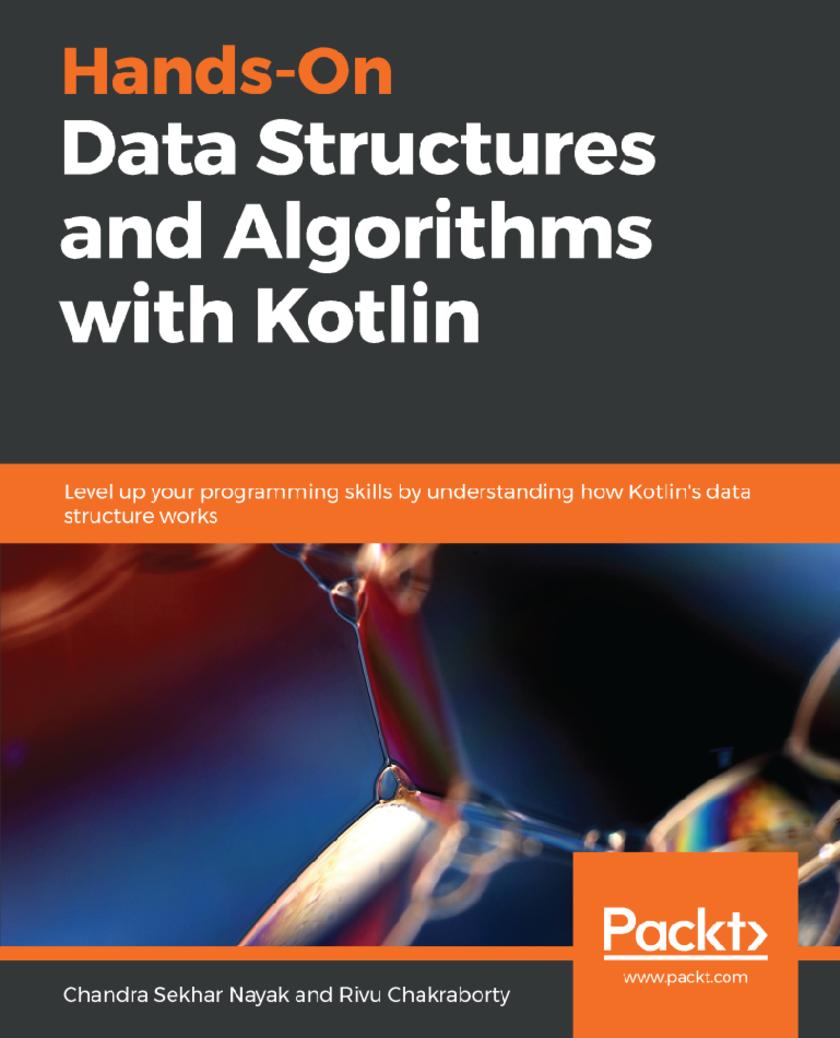
Hands-On Data Structures and Algorithms with Kotlin
¥63.21
Understand and solve complex computational problems and write efficient code with Kotlin Key Features * Learn about important data structures such as lists, arrays, queues, and stacks * Design custom algorithms for real-life implementations * Identify suitable tools for different scenarios and deliver immediate results Book Description Data structures and algorithms are more than just theoretical concepts. They help you become familiar with computational methods for solving problems and writing logical code. Equipped with this knowledge, you can write efficient programs that run faster and use less memory. Hands-On Data Structures and Algorithms with Kotlin book starts with the basics of algorithms and data structures, helping you get to grips with the fundamentals and measure complexity. You'll then move on to exploring the basics of functional programming while getting used to thinking recursively. Packed with plenty of examples along the way, this book will help you grasp each concept easily. In addition to this, you'll get a clear understanding of how the data structures in Kotlin's collection framework work internally. By the end of this book, you will be able to apply the theory of data structures and algorithms to work out real-world problems. What you will learn * Understand the basic principles of algorithms and data structures * Explore general-purpose data structures with arrays and linked lists * Get to grips with the basics of stacks, queues, and double-ended queues * Understand functional programming and related data structures * Use performant searching and efficient sorting * Uncover how Kotlin's collection framework functions * Become adept at implementing different types of maps Who this book is for If you're a Kotlin developer who wants to learn the intricacies of implementing data structures and algorithms for scalable application development, this book is for you.
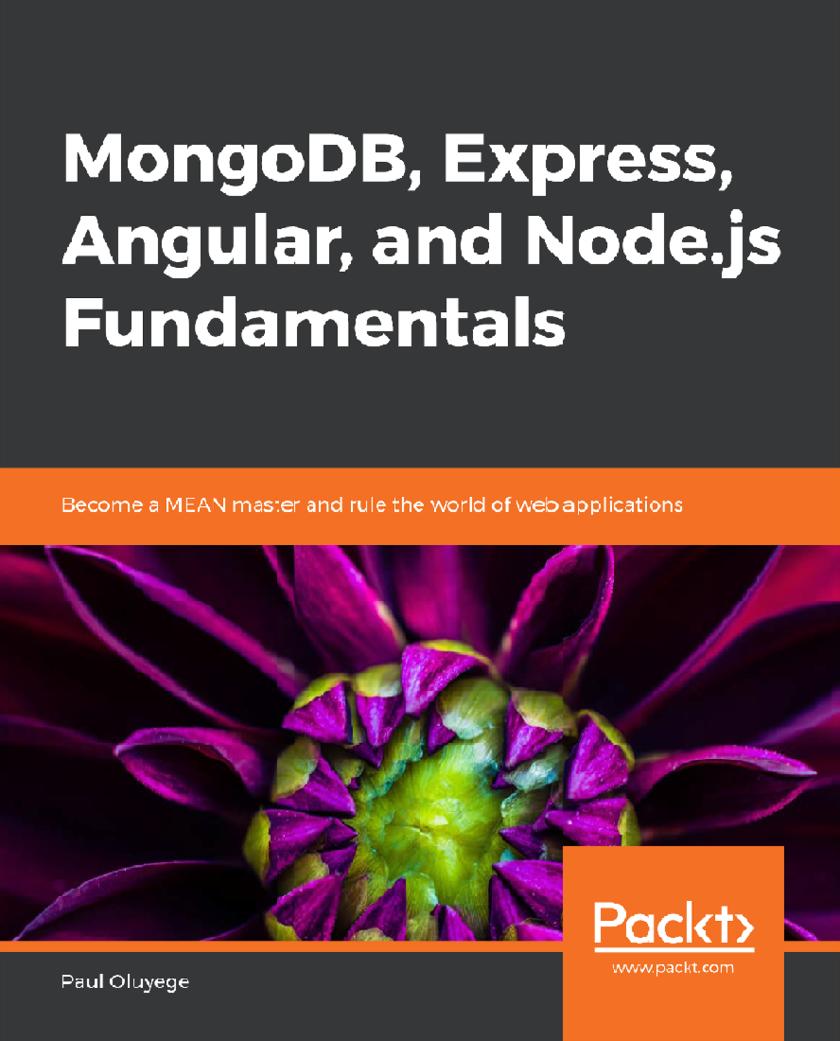
MongoDB, Express, Angular, and Node.js Fundamentals
¥63.21
Build fast, robust, and maintainable modern full-stack web applications using MongoDB, Express, Angular, and Node.js. Key Features * Build highly scalable, asynchronous, and event-driven APIs * Develop a user authentication system with MEAN * Build a full-fledged application using the MEAN stack Book Description MongoDB, Express, Angular and Node.js Fundamentals is a practical guide to the tried-and-true production-ready MEAN stack, with tips and best practices. The book begins by demystifying the MEAN architecture. You’ll take a look at the features of the JavaScript libraries, technologies, and frameworks that make up a MEAN stack. With this book, you'll not only learn how to develop highly scalable, asynchronous, and event-driven APIs quickly with Express and Node.js, but you'll also be able put your full-stack skills to use by building two full-fledged MEAN applications from scratch. You’ll understand how to build a blogging application using the MEAN stack and get to grips with user authentication using MEAN. As you progress through the chapters, you’ll explore some old and new features of Angular, such as pipes, reactive forms, modules and optimizing apps, animations and unit testing, and much more. By the end of the book, you’ll get ready to take control of the MEAN stack and transform into a full-stack JavaScript developer, developing efficient web applications using Javascript technologies. What you will learn * Understand the MEAN architecture * Create RESTful APIs to complete CRUD tasks * Build a blogging application with basic features * Describe best practices to secure node applications * Implement authentication and authorization * Creating simple animations using Angular * Perform unit testing on Angular applications Who this book is for If you are a beginner or intermediate frontend developer who wants to become full-stack JavaScript developer, this book is ideal for you. You'll need some prior exposure to MongoDB as we skim over its basics before getting straight to work.
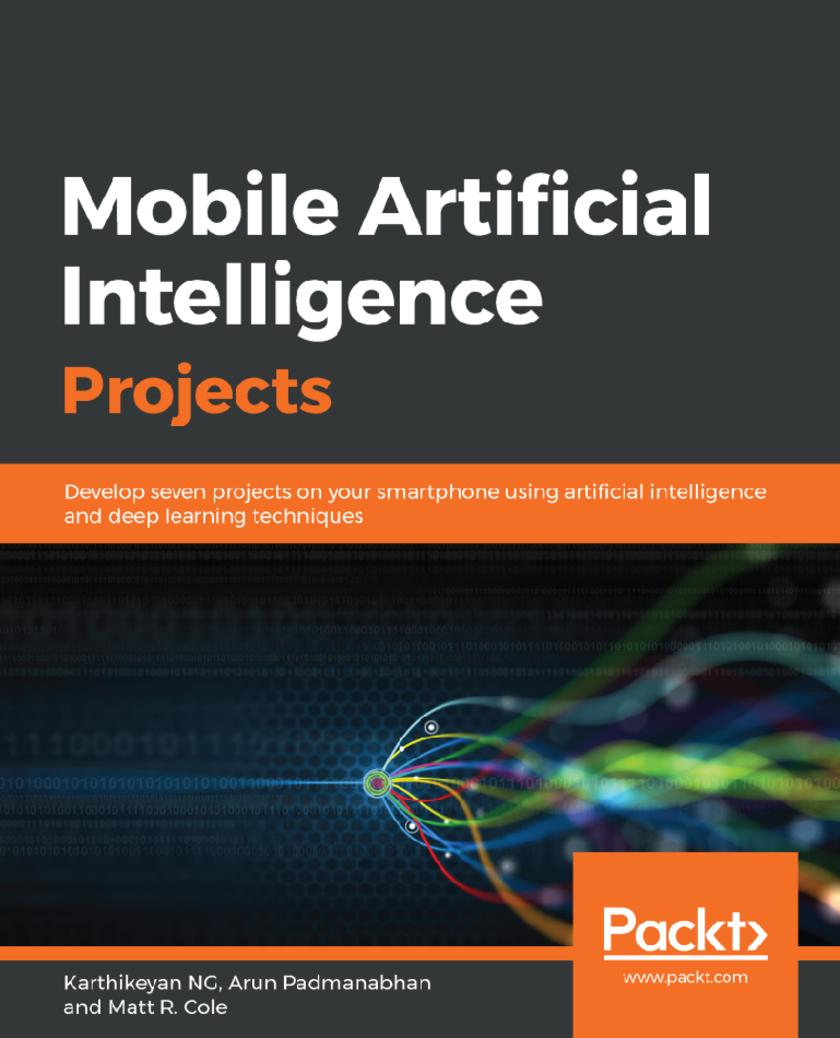
Mobile Artificial Intelligence Projects
¥63.21
Learn to build end-to-end AI apps from scratch for Android and iOS using TensorFlow Lite, CoreML, and PyTorch Key Features * Build practical, real-world AI projects on Android and iOS * Implement tasks such as recognizing handwritten digits, sentiment analysis, and more * Explore the core functions of machine learning, deep learning, and mobile vision Book Description We’re witnessing a revolution in Artificial Intelligence, thanks to breakthroughs in deep learning. Mobile Artificial Intelligence Projects empowers you to take part in this revolution by applying Artificial Intelligence (AI) techniques to design applications for natural language processing (NLP), robotics, and computer vision. This book teaches you to harness the power of AI in mobile applications along with learning the core functions of NLP, neural networks, deep learning, and mobile vision. It features a range of projects, covering tasks such as real-estate price prediction, recognizing hand-written digits, predicting car damage, and sentiment analysis. You will learn to utilize NLP and machine learning algorithms to make applications more predictive, proactive, and capable of making autonomous decisions with less human input. In the concluding chapters, you will work with popular libraries, such as TensorFlow Lite, CoreML, and PyTorch across Android and iOS platforms. By the end of this book, you will have developed exciting and more intuitive mobile applications that deliver a customized and more personalized experience to users. What you will learn * Explore the concepts and fundamentals of AI, deep learning, and neural networks * Implement use cases for machine vision and natural language processing * Build an ML model to predict car damage using TensorFlow * Deploy TensorFlow on mobile to convert speech to text * Implement GAN to recognize hand-written digits * Develop end-to-end mobile applications that use AI principles * Work with popular libraries, such as TensorFlow Lite, CoreML, and PyTorch Who this book is for Mobile Artificial Intelligence Projects is for machine learning professionals, deep learning engineers, AI engineers, and software engineers who want to integrate AI technology into mobile-based platforms and applications. Sound knowledge of machine learning and experience with any programming language is all you need to get started with this book.
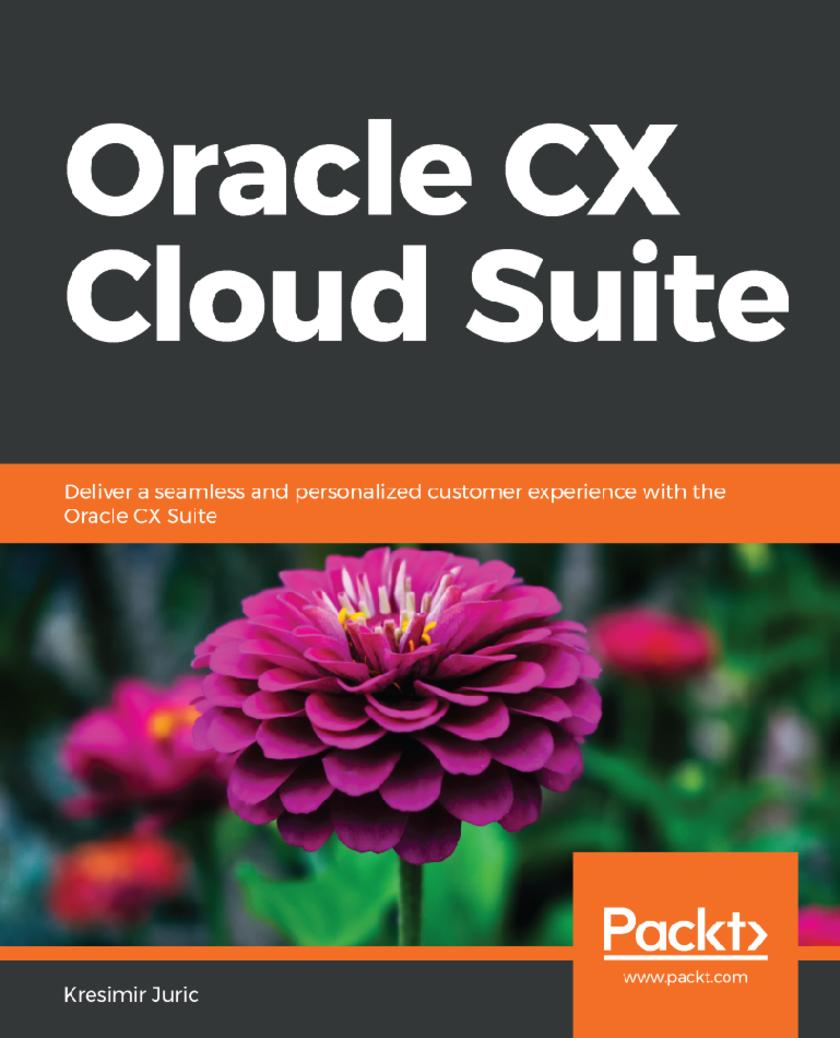
Oracle CX Cloud Suite
¥63.21
Gain a complete overview of Oracle CX Cloud Suite and its tools for functions ranging from marketing to sales and commerce to service Key Features * Make optimal use of your Oracle CX Cloud Suite to improve business results * Achieve improved customer insights through Oracle CX’s advanced capabilities * Learn how to design a CX solution architecture Book Description Oracle CX Cloud offers features and capabilities that help companies excel at sales, customer management, and much more. This book is a detailed guide to implementing cloud solutions and helping administrators of all levels thoroughly understand the platform. Oracle CX Cloud Suite begins with an introduction to high-level Oracle architecture and examines what CX offers over CRM. You’ll explore the different cloud-based tools for marketing, sales, and customer services, among others. The book then delves into deployment by covering basic settings, setting up users, and provisioning. You’ll see how to integrate the CX suite to work together to interact with the environment and connect with legacy systems, social connectors, and internet services. The book concludes with a use case demonstrating how the entire Oracle CX Suite is set up, and also covers how to leverage Oracle ICS and Oracle CX Cloud for hybrid deployment. By end of the book, you will have learned about the working of the Oracle CX Cloud Suite and how to orchestrate user experience across all products seamlessly. What you will learn * Differentiate between Oracle CRM and CX Cloud suites * Explore a variety of Oracle CX Cloud tools for marketing and sales * Set up users and database connections during deployment * Employ Cloud Suite CX tools to aid in planning and analysis * Implement hybrid Oracle CX solutions and connect with legacy systems * Integrate with social media connectors like Facebook and LinkedIn * Leverage Oracle ICS and Oracle CX Suite to improve business results Who this book is for This book is for administrators who want to develop and strengthen their Oracle CX Cloud Suite skills in the areas of configuration and system management. Whether you are a new administrator or an experienced professional, this book will enhance your understanding of the new Oracle CX features.
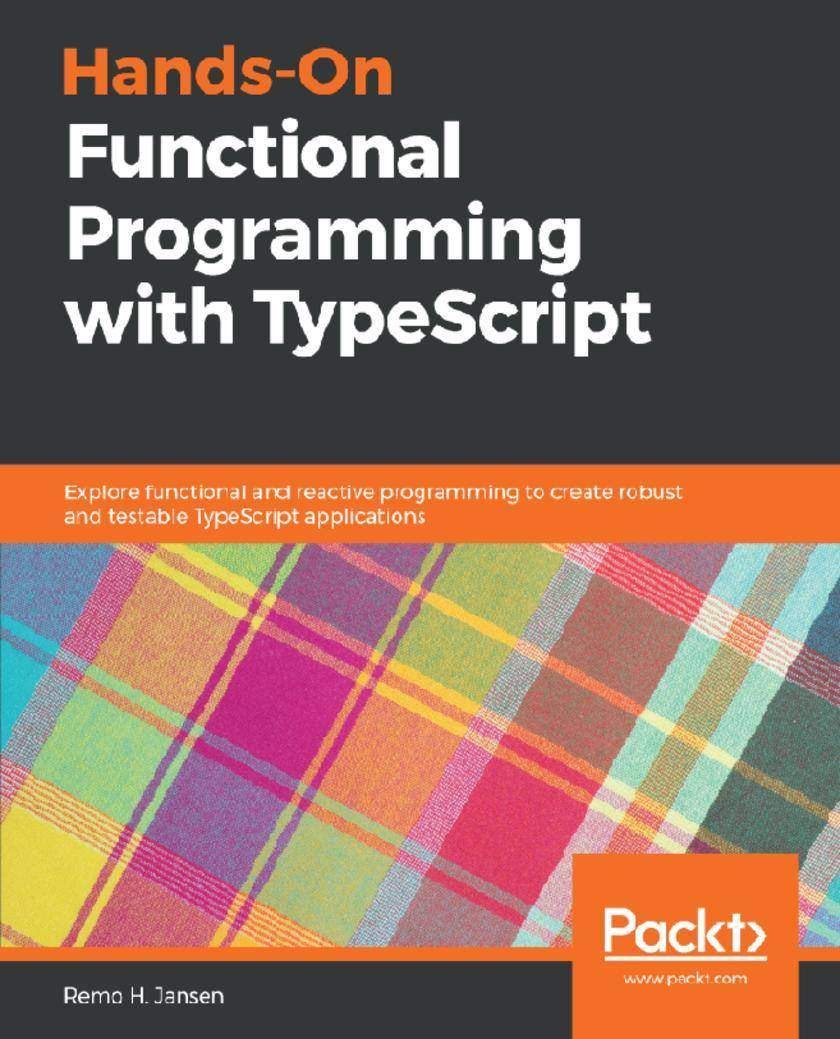
Hands-On Functional Programming with TypeScript
¥63.21
Discover the power of functional programming, lazy evaluation, monads, concurrency, and immutability to create succinct and expressive implementations Key Features * Get a solid understanding of how to apply functional programming concepts in TypeScript * Explore TypeScript runtime features such as event loop, closures, and Prototypes * Gain deeper knowledge on the pros and cons of TypeScript Book Description Functional programming is a powerful programming paradigm that can help you to write better code. However, learning functional programming can be complicated, and the existing literature is often too complex for beginners. This book is an approachable introduction to functional programming and reactive programming with TypeScript for readers without previous experience in functional programming with JavaScript, TypeScript , or any other programming language. The book will help you understand the pros, cons, and core principles of functional programming in TypeScript. It will explain higher order functions, referential transparency, functional composition, and monads with the help of effective code examples. Using TypeScript as a functional programming language, you’ll also be able to brush up on your knowledge of applying functional programming techniques, including currying, laziness, and immutability, to real-world scenarios. By the end of this book, you will be confident when it comes to using core functional and reactive programming techniques to help you build effective applications with TypeScript. What you will learn * Understand the pros and cons of functional programming * Delve into the principles, patterns, and best practices of functional and reactive programming * Use lazy evaluation to improve the performance of applications * Explore functional optics with Ramda * Gain insights into category theory functional data structures such as Functors and Monads * Use functions as values, so that they can be passed as arguments to other functions Who this book is for This book is designed for readers with no prior experience of functional programming with JavaScript, TypeScript or any other programming language. Some familiarity with TypeScript and web development is a must to grasp the concepts in the book easily.

Photoshop: A Step by Step Ultimate Beginners’ Guide to Mastering Adobe Photoshop
¥65.32
Photoshop: A Step by Step Ultimate Beginners’ Guide to Mastering Adobe Photoshop in 1 Week

Mastering SoapUI
¥65.39
Master the art of testing and automating your SOA using SoapUI About This Book Design real-time test automation frameworks for Enterprise applications using SoapUI Learn how to solve test automation issues for complex systems A complete guide to understanding SOA automation from quality assurance to business assurance Who This Book Is For The book is intended for test architects, SOA test specialists, automation testers, test managers, and software developers who have a good understanding of SOA, web services, Groovy Scripting, and the SOAP UI tool. What You Will Learn Familiarize yourself with Test Web services from functional, nonfunctional, and security aspects Learn to test real-time service orchestrations Design test automation solutions for SOA-based Enterprise applications Learn multilayer test automation Selenium plus SoapUI under a single umbrella Integrate your SoapUI framework with Jenkins In Detail SoapUI is an open-source cross-platform testing application that provides complete test coverage and supports all the standard protocols and technologies. This book includes real-time examples of implementing SoapUI to achieve quality and business assurance. Starting with the features and functionalities of SoapUI, the book will then focus on functional testing, load testing, and security testing of web services. Furthermore, you will learn how to automate your services and then design data-driven, keyword-driven, and hybrid-driven frameworks in SoapUI. Then the book will show you how to test UIs and services using SoapUI with the help of Selenium. You will also learn how to integrate SoapUI with Jenkins for CI and SoapUI test with QC with backward- and forward-compatibility. The final part of the book will show you how to virtualize a service response in SoapUI using Service Mocking. You will finish the journey by discovering the best practices for SoapUI test automation and preparing yourself for the online certification of SoapUI. Style and approach Filled with real-time examples, this book will help readers take their knowledge to the next level. This book is a comprehensive guide that will cover the end-to-end life cycle of implementing SoapUI in various phases of software testing and the software development life cycle.
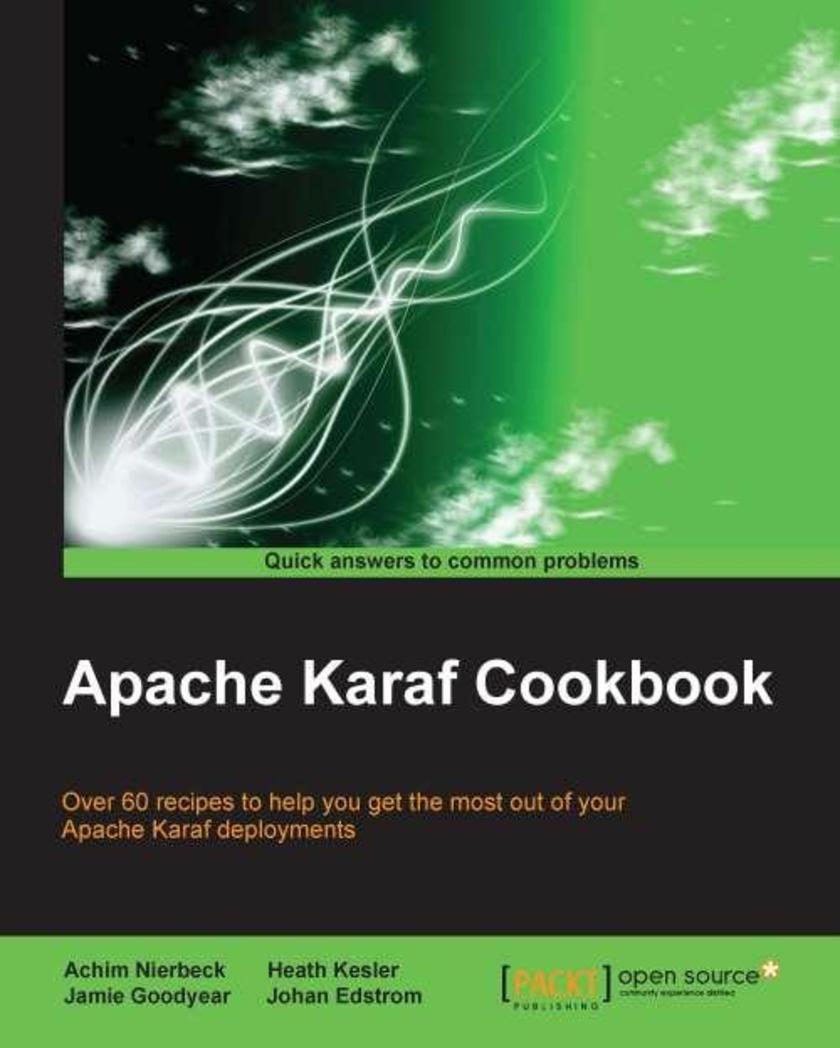
Apache Karaf Cookbook
¥65.39
This book is intended for developers who have some familiarity with Apache Karaf and who want a quick reference for practical, proven tips on how to perform common tasks such as configuring Pax modules deployed in Apache Karaf, Extending HttpService with Apache Karaf. You should have working knowledge of Apache karaf, as the book provides a deeper understanding of the capabilities of Apache Karaf.

Kali Linux CTF Blueprints
¥65.39
Taking a highly practical approach and a playful tone, Kali Linux CTF Blueprints provides step-by-step guides to setting up vulnerabilities, in-depth guidance to exploiting them, and a variety of advice and ideas to build and customize your own challenges. If you are a penetration testing team leader or individual who wishes to challenge yourself or your friends in the creation of penetration testing assault courses, this is the book for you. The book assumes a basic level of penetration skills and familiarity with the Kali Linux operating system.
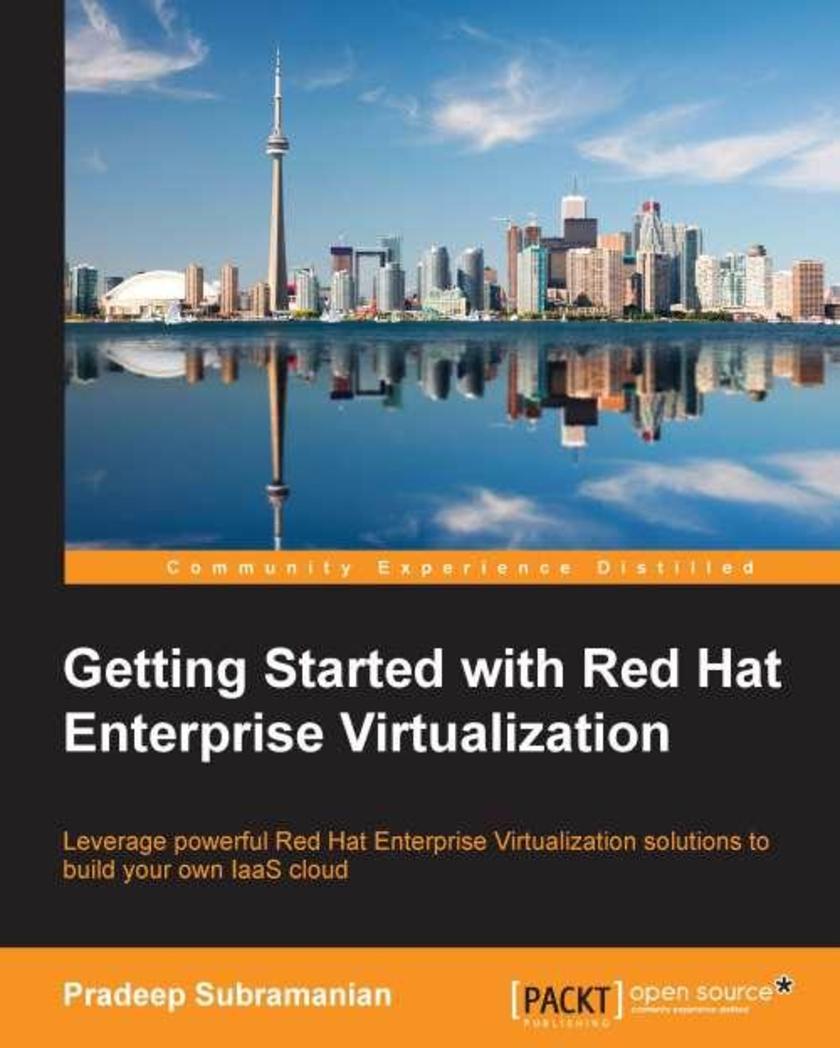
Getting Started with Red Hat Enterprise Virtualization
¥65.39
If you are a system administrator who is interested in implementing and managing open source virtualization infrastructures, this is the book for you. A basic knowledge of virtualization and basic Linux command line experience is needed.

Building a Web Application with PHP and MariaDB: A Reference Guide
¥65.39
This is a step-by-step, tutorial guide designed to help readers transition from beginners to more experienced developers using clear explanations. The variety of examples will help readers build, secure, and host real-time web applications. If you are a developer who wants to use PHP and MariaDB to build web applications, this book is ideal for you. Beginners can use this book to start with the basics and learn how to build and host web applications. Seasoned PHP Developers can use this book to get familiar with the new features of PHP 5.4 and 5.5, unit testing, caching, security, and performance optimization.
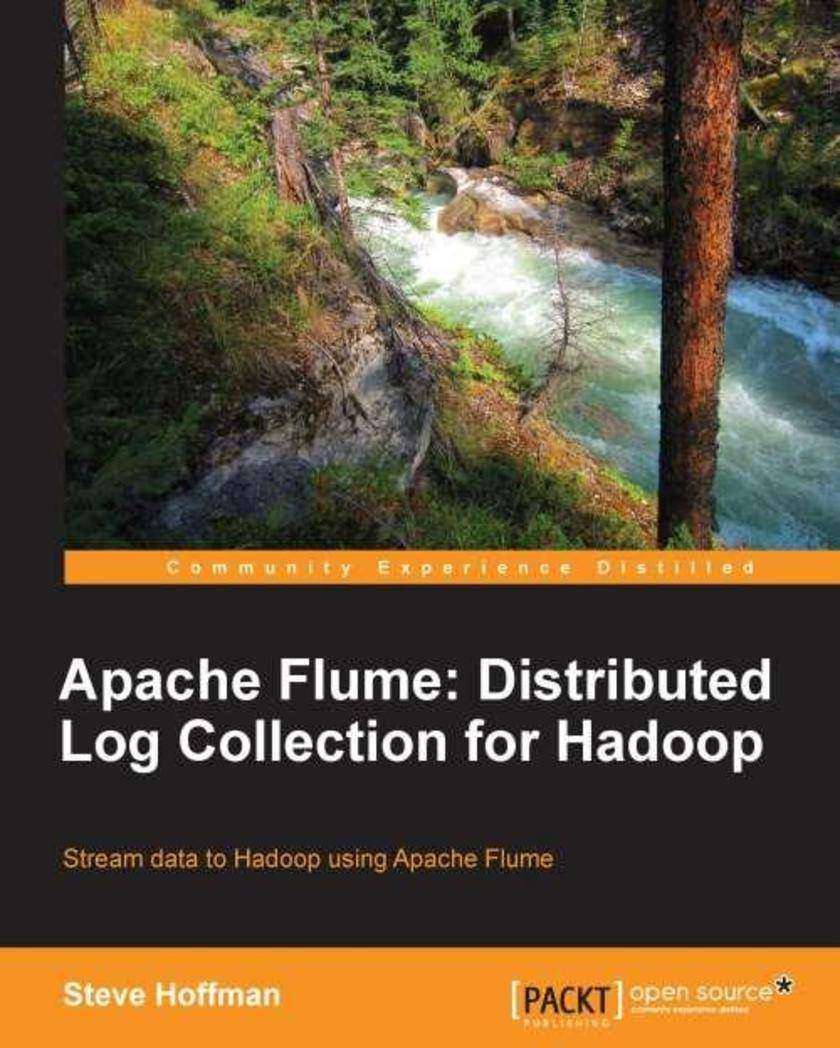
Apache Flume: Distributed Log Collection for Hadoop
¥66.48
A starter guide that covers Apache Flume in detail.Apache Flume: Distributed Log Collection for Hadoop is intended for people who are responsible for moving datasets into Hadoop in a timely and reliable manner like software engineers, database administrators, and data warehouse administrators
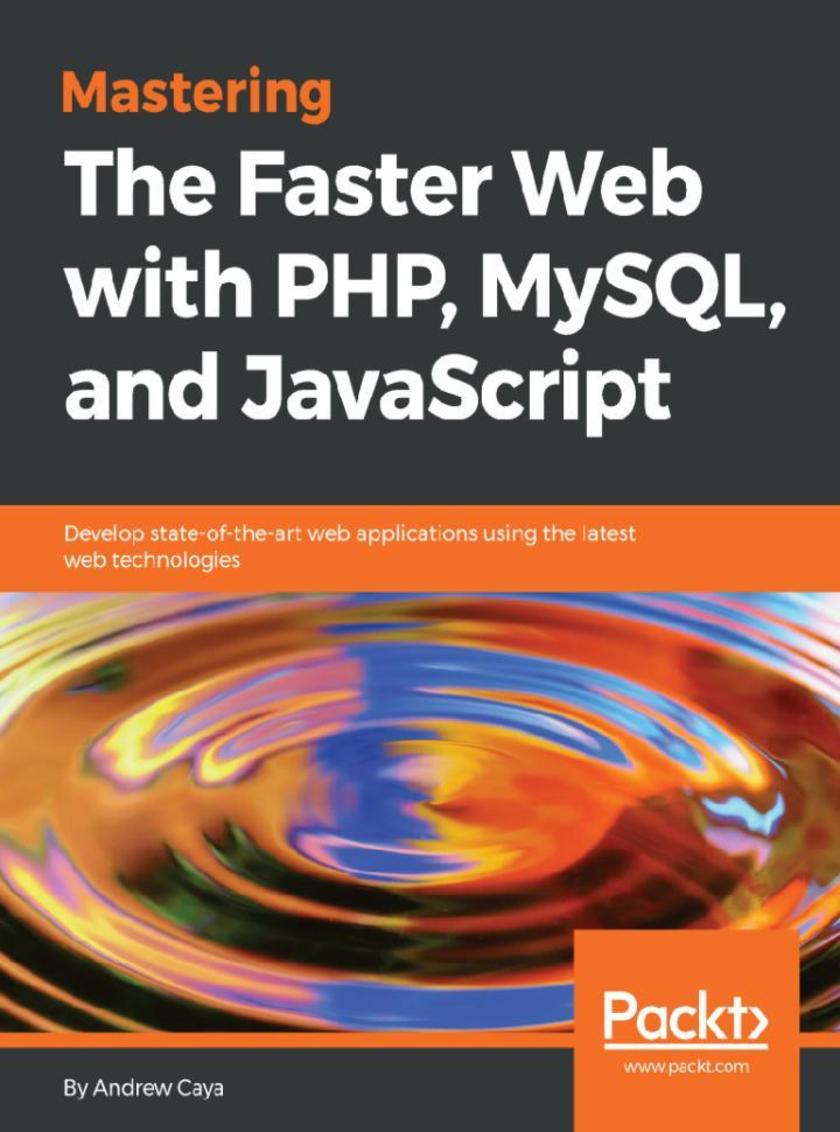
Mastering The Faster Web with PHP, MySQL, and JavaScript
¥66.48
Make web applications run faster by using advanced PHP, SQL and JavaScript techniques About This Book ? Use a customized PHP stack to create efficient data-driven web applications ? Ensure seamless implementation of a JavaScript & HTML 5 CSS based frontend and PHP based backend. ? Learn about problem identification, best strategies, and UI design patterns as well to build a clean, fast web application Who This Book Is For The audience for this book would be PHP developers who have some basic knowledge of PHP programming and Web technologies. JavaScript programming knowledge is not necessary. What You Will Learn ? Install, confgure, and use profling and benchmarking testing tools ? Understand how to recognize optimizable data structures and functions to effectively optimize a PHP7 application ? Diagnose bad SQL query performance and discover ways to optimize it ? Grasp modern SQL techniques to optimize complex SQL queries ? Identify and simplify overly complex JavaScript code ? Explore and implement UI design principles that effectively enhance the performance ? Combine web technologies to boost web server performance In Detail This book will get you started with the latest benchmarking, profiling and monitoring tools for PHP, MySQL and JavaScript using Docker-based technologies. From optimizing PHP 7 code to learning asynchronous programming, from implementing Modern SQL solutions to discovering Functional JavaScript techniques, this book covers all the latest developments in Faster Web technologies. You will not only learn to determine the best optimization strategies, but also how to implement them. Along the way, you will learn how to profile your PHP scripts with Blackfire.io, monitor your Web applications, measure database performance, optimize SQL queries, explore Functional JavaScript, boost Web server performance in general and optimize applications when there is nothing left to optimize by going beyond performance. After reading this book, you will know how to boost the performance of any Web application and make it part of what has come to be known as the Faster Web. Style and approach The book has a step by step practical approach to developing highly efficient Web applications, with many practical and useful code snippets.
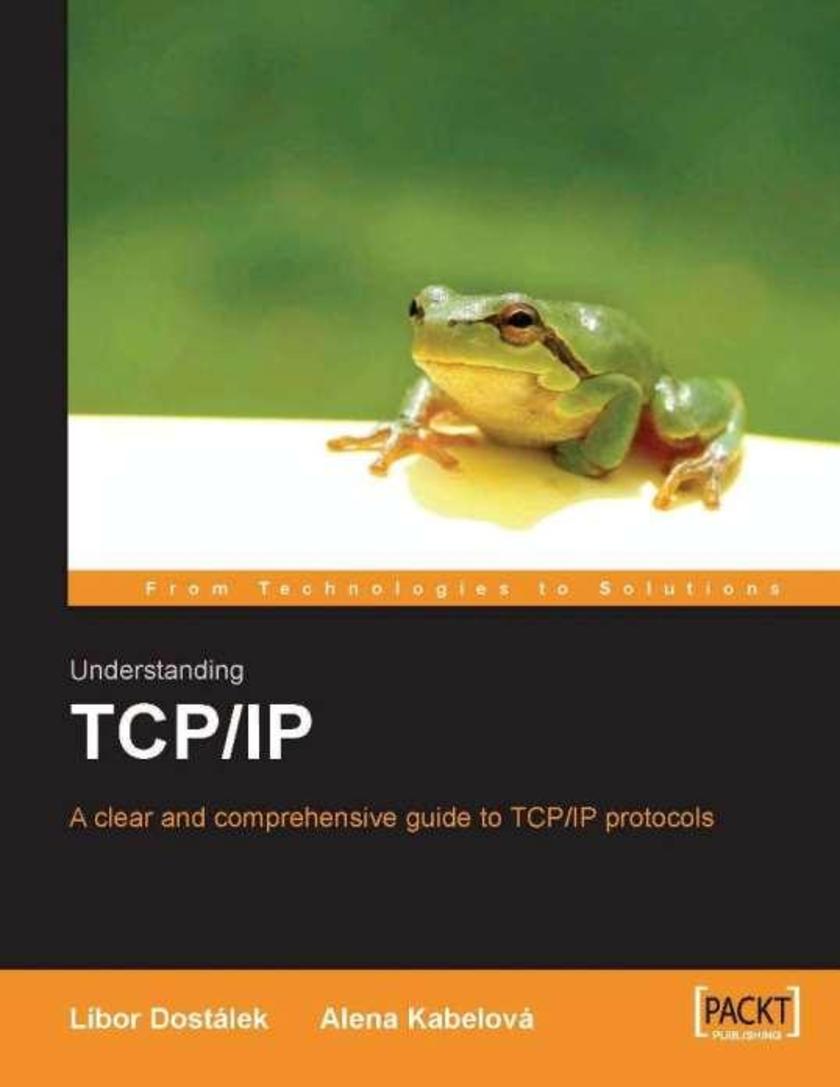
Understanding TCP/IP
¥66.48
This book is suitable for the novice and experienced system administrators, programmers, and anyone who would like to learn how to work with the TCP/IP protocol suite. It can be read even by those who have little background in networking
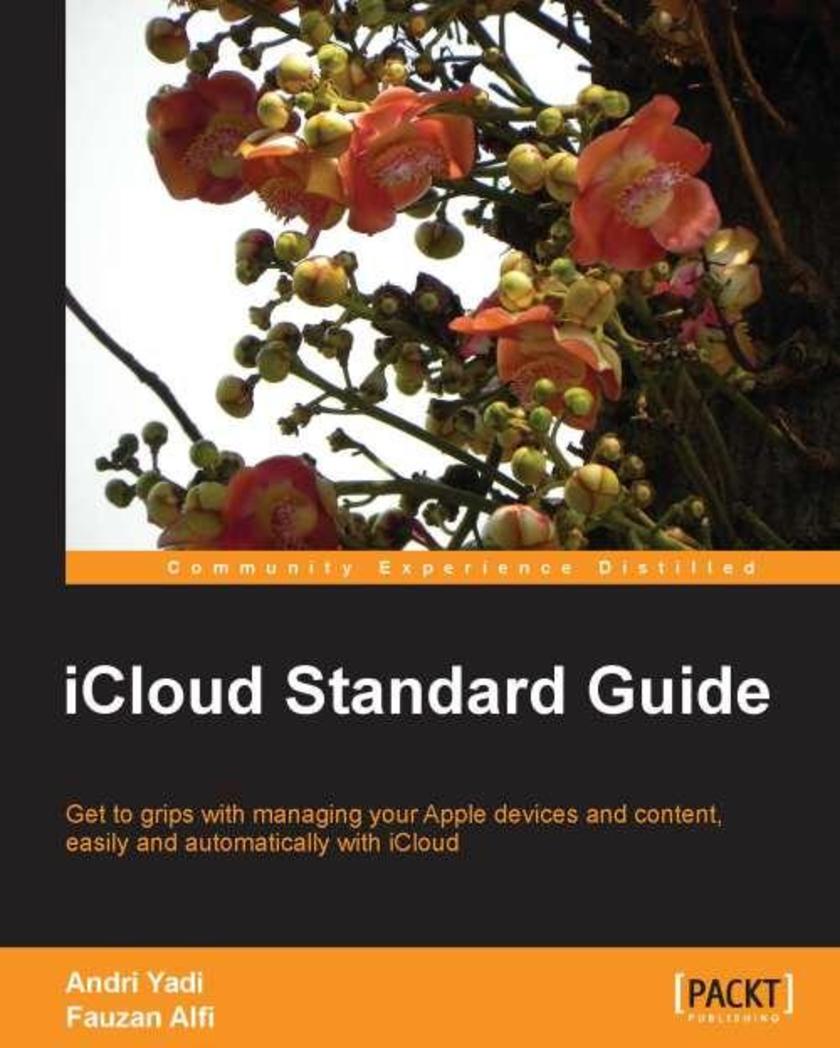
iCloud Standard Guide
¥66.48
An easy-to-use guide, filled with tutorials that will teach you how to set up and use iCloud, and profit from all of its marvellous features.This book is for anyone with basic knowledge of computers and mobile operations. Prior knowledge of cloud computing or iCloud is not expected.




 购物车
购物车 个人中心
个人中心



